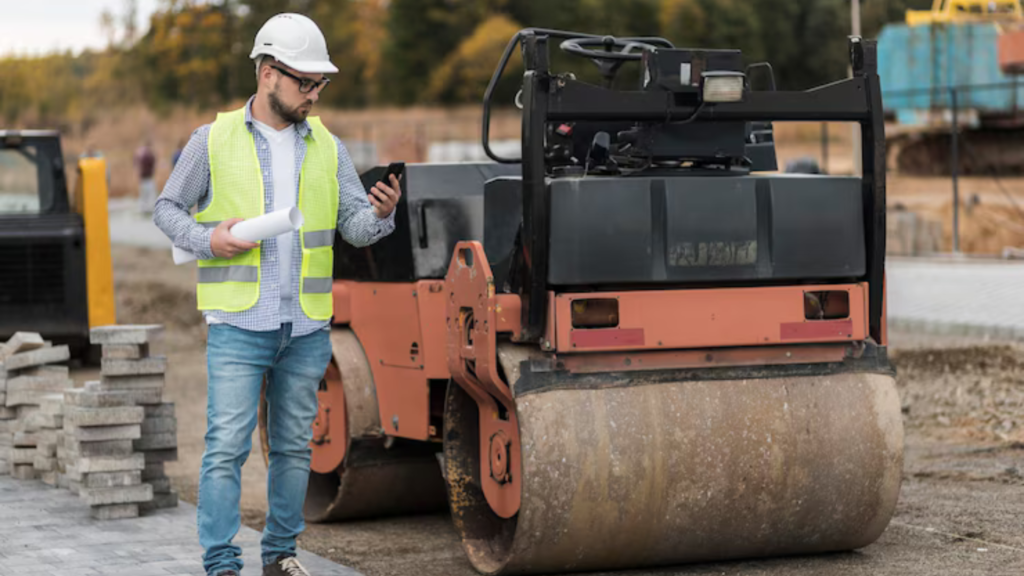The construction industry has traditionally been labor-intensive, requiring large teams to handle a variety of tasks. However, the integration of autonomous machines is revolutionizing the sector by enhancing productivity, safety, and efficiency. Autonomous technology is increasingly being adopted in heavy machinery, from bulldozers to cranes, as the industry strives for innovation. This blog explores how autonomous machines, along with advancements in machines and construction technologies, are reshaping the future of the construction industry.
Rise of Autonomous Machines in Construction
In recent years, autonomous machines have emerged as game-changers in the construction landscape. Autonomous construction equipment can operate without human intervention, powered by advanced technologies such as AI, machine learning, and 5G. These technologies enable machines to make real-time decisions based on sensory data and pre-programmed algorithms.
According to a report by ResearchAndMarkets, the global autonomous construction equipment market size was valued at $1.8 billion in 2022 and is expected to grow at a compound annual growth rate (CAGR) of 15.3% from 2023 to 2030.
This growth is driven by the need to improve safety, reduce labor costs, and enhance operational efficiency. The incorporation of autonomous machines in construction can help with tasks such as excavation, material transport, and site preparation, which were traditionally more susceptible to human error.
Key Trends in Autonomous Machines and Their Role in Construction
Increased Use of Autonomous Excavators and Dozers
Autonomous excavators and dozers are among the most widely adopted autonomous machines on construction sites today. These machines are designed to move and dig earth automatically, based on input from GPS systems, sensors, and advanced software algorithms.
Komatsu’s HD605-8 Autonomous Haulage System is one of the most notable developments. The system allows Komatsu autonomous haul trucks to operate on mining sites without human intervention. The trucks can transport materials efficiently, reducing human labor and operating costs, while increasing safety by reducing the risk of human errors in dangerous environments.
Construction Robots for Bricklaying and Concrete Pouring
Robotic bricklayers and autonomous machines are also being used to streamline tasks like bricklaying and concrete pouring. Construction robots are designed to perform repetitive tasks faster and with more precision than humans.
The SAM100, a bricklaying robot developed by Construction Robotics, can lay up to 3,000 bricks a day, significantly reducing construction time on masonry-heavy projects. This robot helps construction companies reduce labor costs, while also improving consistency and reducing errors.
Drones and Autonomous Surveying Machines
Drones are playing a significant role in autonomous surveying. These machines are capable of surveying large construction sites and providing real-time data that can be used to monitor progress, assess conditions, and plan next steps. Autonomous surveying equipment can scan sites quickly, creating accurate 3D maps without the need for human operators.
Companies like Trimble and DJI are developing autonomous drones equipped with LiDAR and photogrammetry to perform construction site surveying. These machines capture high-resolution images and generate 3D models for site analysis in real-time. A survey conducted by Deloitte showed that 70% of construction companies believe drones improve construction productivity and reduce project completion times.
Autonomous Construction Machines in Large-Scale Projects
Many construction leaders are already implementing autonomous systems in their large-scale projects. These companies are focusing on increasing safety, reducing costs, and improving operational efficiencies.
Volvo Construction Equipment launched the Volvo EC950F Crawler Excavator, a machine capable of working autonomously when integrated with their advanced automation system. This technology is particularly useful for earthmoving projects where excavation machines can run without constant human monitoring.
Furthermore, Caterpillar’s Autonomous Haulage System (AHS) is transforming mining and construction projects by allowing haul trucks to navigate large construction sites without operators. These trucks operate 24/7, reducing fuel consumption and improving material delivery times.
Caterpillar reported that its AHS system has increased productivity by 20% and reduced operational costs by 15-20% for mining and construction projects.
Challenges and Future of Autonomous Machines in Construction
Despite the growing interest and adoption of autonomous machines in construction, there are several challenges to consider. The complexity of technology, high initial costs, and regulatory hurdles can slow the widespread adoption of these machines.
However, experts believe that machines will continue to evolve, with manufacturers working to improve their accuracy, safety, and affordability. For instance, robotic process automation (RPA) and AI-driven decision-making are expected to become even more integrated into construction processes, enabling full-site automation.
Daimler is working on developing fully autonomous concrete-mixing trucks that can transport concrete automatically to construction sites. By utilizing AI algorithms and GPS systems, these trucks will optimize routes and reduce delays, making the transportation process more efficient.
Conclusion
The integration of autonomous machines into the construction industry is transforming how projects are executed. From autonomous dozers and excavators to drones for site surveys, these machines are enhancing productivity and safety. As the technology continues to advance, more construction projects will rely on autonomous systems to improve efficiencies, reduce costs, and enhance safety standards.
With construction companies around the world embracing these innovations, it’s clear that the future of the construction industry lies in autonomous machines. The adoption of these machines, backed by research and technology, will define the next era of construction—one that promises faster, smarter, and more sustainable project delivery.
